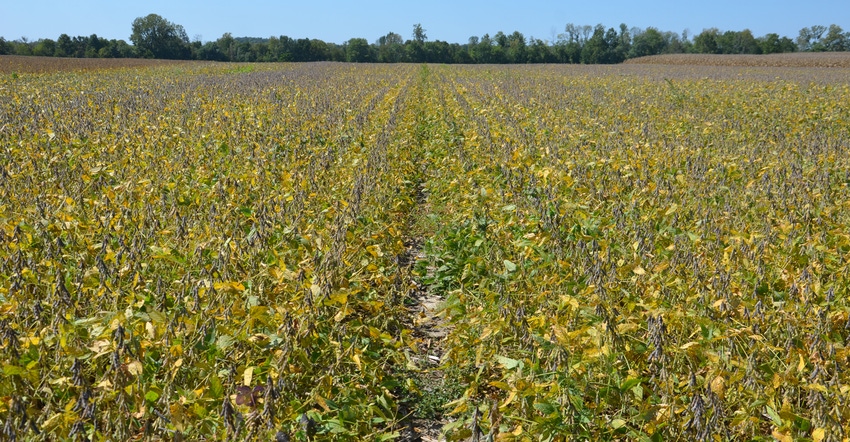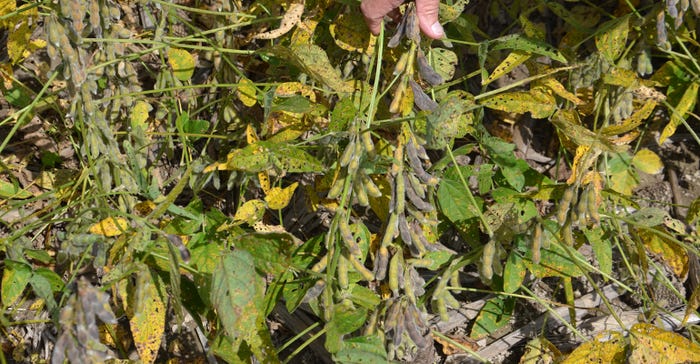
If you have any doubts about how well soybeans can compensate for missing plants, here is a classic example. Steve Gauck discovered it while scouting as soybeans neared maturity in the Soybean Watch ’18 field.
“Give a soybean plant room, and it is going to send out branches and put on as many pods as possible,” says Gauck, a Beck’s sales agronomist based near Greensburg, Ind. Beck’s sponsors Soybean Watch ’18.
Since early in the season, Gauck has observed a pattern where tracks from a pass at planting interfered with emergence on the side of the field where planting began. The pattern was obvious once plants emerged, and very noticeable in images taken via UAV flights over the field in mid-July.
That set up an opportunity for soybean plants to show how well they can compensate, Gauck says. When scouting in those areas just before harvest, he noted that plants along edges of the track gaps with no close neighbors on one side sent out more branches and formed more pods.
“Nodes seemed shorter and closer together, and pods were plentiful,” he says. “When the soybean plant senses empty space, it begins compensating early in the season. The first reaction is that it decides to put out more branches.
“Later in the season, it decides it can produce and fill more pods. It really looked like a jungle of pods right along the edge of the gap.”
Classic example
Soybeans on both sides of the gap appeared to compensate for not having close neighbors, Gauck says. While bean size is a major contributor to final yield, more pods typically means more beans and either more yield or, in this case, less yield loss from missing plants.
 MORE PODS, MORE BEANS: Note how many pods are packed on these plants at the edge of the gap in between rows. The plants compensated for missing plants that should’ve emerged in the wheel tracks.
MORE PODS, MORE BEANS: Note how many pods are packed on these plants at the edge of the gap in between rows. The plants compensated for missing plants that should’ve emerged in the wheel tracks.

It would be difficult to quantitatively measure how well the soybeans compensated for missing plants, Gauck says. “Yield estimates work reasonably well for corn, but they just aren’t that accurate for soybeans. “It’s difficult to estimate number of pods, factor in bean size and come up with reasonable estimates.”
The bottom line is that in a case like this one, where soybeans partially fill a gap by adding extra branches and more pods on each side of a missing row, it’s difficult to estimate how much compensation occurs.
Would the field still have yielded more if the tracks creating the lost stand and resulting pattern hadn’t occurred? “We would presume so, but there is no good way to know for sure,” Gauck says. “It’s obvious that the remaining plants compensated and are going to yield more than they would have otherwise. Whether they yielded enough more to totally make up for missing stand is another question.”
About the Author(s)
You May Also Like




